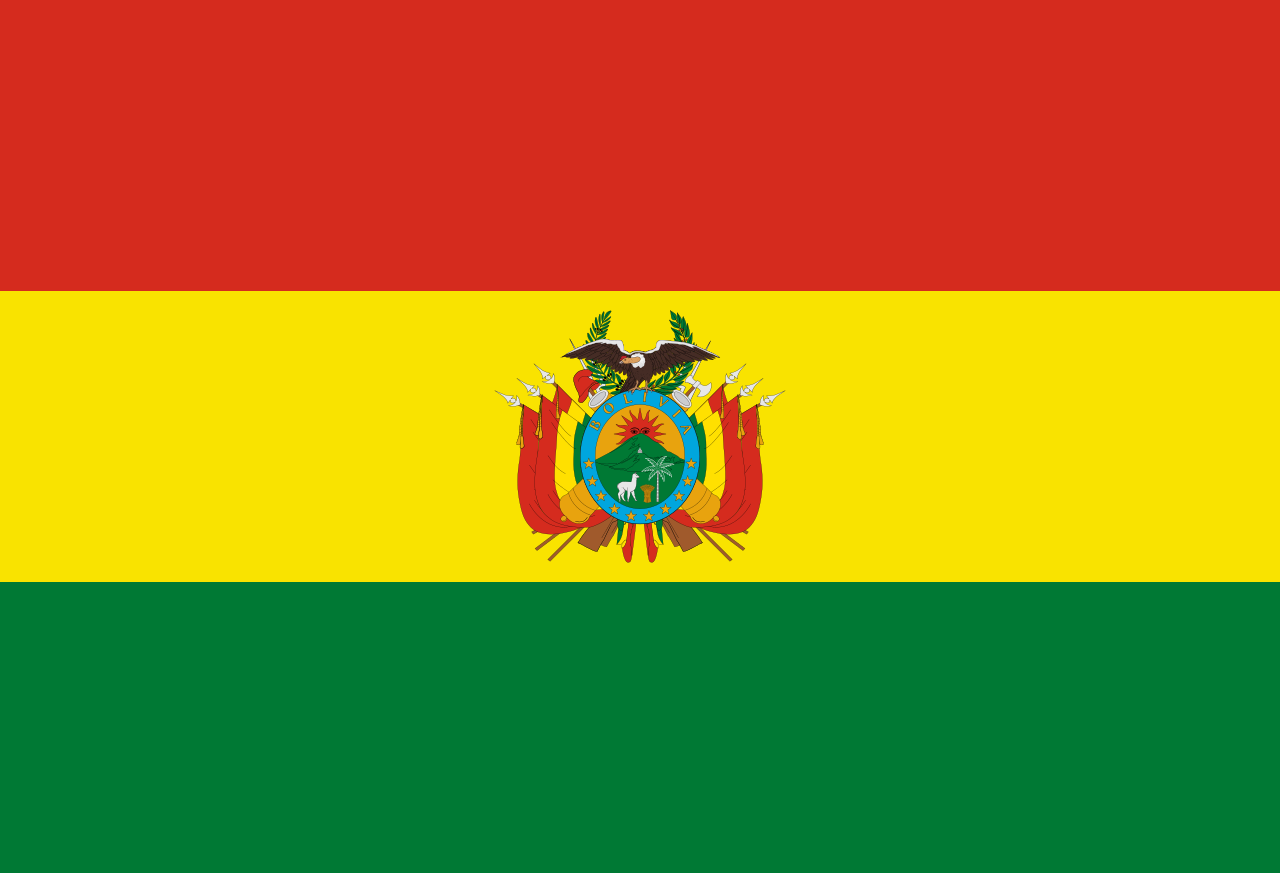The flag of Bolivia is a vibrant and symbolic representation of the country’s rich history, culture, and natural wealth. It was officially adopted in its current form on October 31, 1851, and is one of the oldest flags in South America.
Design and Elements
- Tricolor Stripes: The flag consists of three horizontal stripes of equal width.
- Top Stripe (Red): The top stripe is red.
- Middle Stripe (Yellow): The middle stripe is yellow.
- Bottom Stripe (Green): The bottom stripe is green.
Symbolism
- Red: Represents the valor and bravery of the Bolivian people, particularly in their struggle for independence.
- Yellow: Symbolizes the country’s vast mineral resources and wealth, highlighting Bolivia’s natural riches.
- Green: Reflects Bolivia’s lush and fertile lands, its natural environment, and the hope and prosperity of its people.
Proportions
- The flag has a 2:3 ratio, which is common among national flags.
National Coat of Arms (Variant Flag)
- A variant of the flag, often used by government and military, includes the national coat of arms centered on the yellow stripe.
- Coat of Arms: Features a shield with a landscape of Mount Potosí, an alpaca, a wheat sheaf, and a palm tree, symbolizing Bolivia’s natural resources and landscape.
- Weapons and Flags: Surrounded by Bolivian flags, cannons, and muskets, it represents the nation’s readiness to defend its sovereignty.
- Condor: A condor above the shield symbolizes the desire for freedom and the protective spirit of the Bolivian people.
Historical Context
- The colors of the flag were inspired by the flag of the Bolivian Liberation Army during the country’s fight for independence in the early 19th century.
- These colors have been retained to emphasize national pride and the enduring values of Bolivia’s cultural and historical heritage.
Overall, the flag of Bolivia is a powerful emblem of national identity, reflecting the country’s diverse geography, its struggles, and its hopes for a prosperous future.
